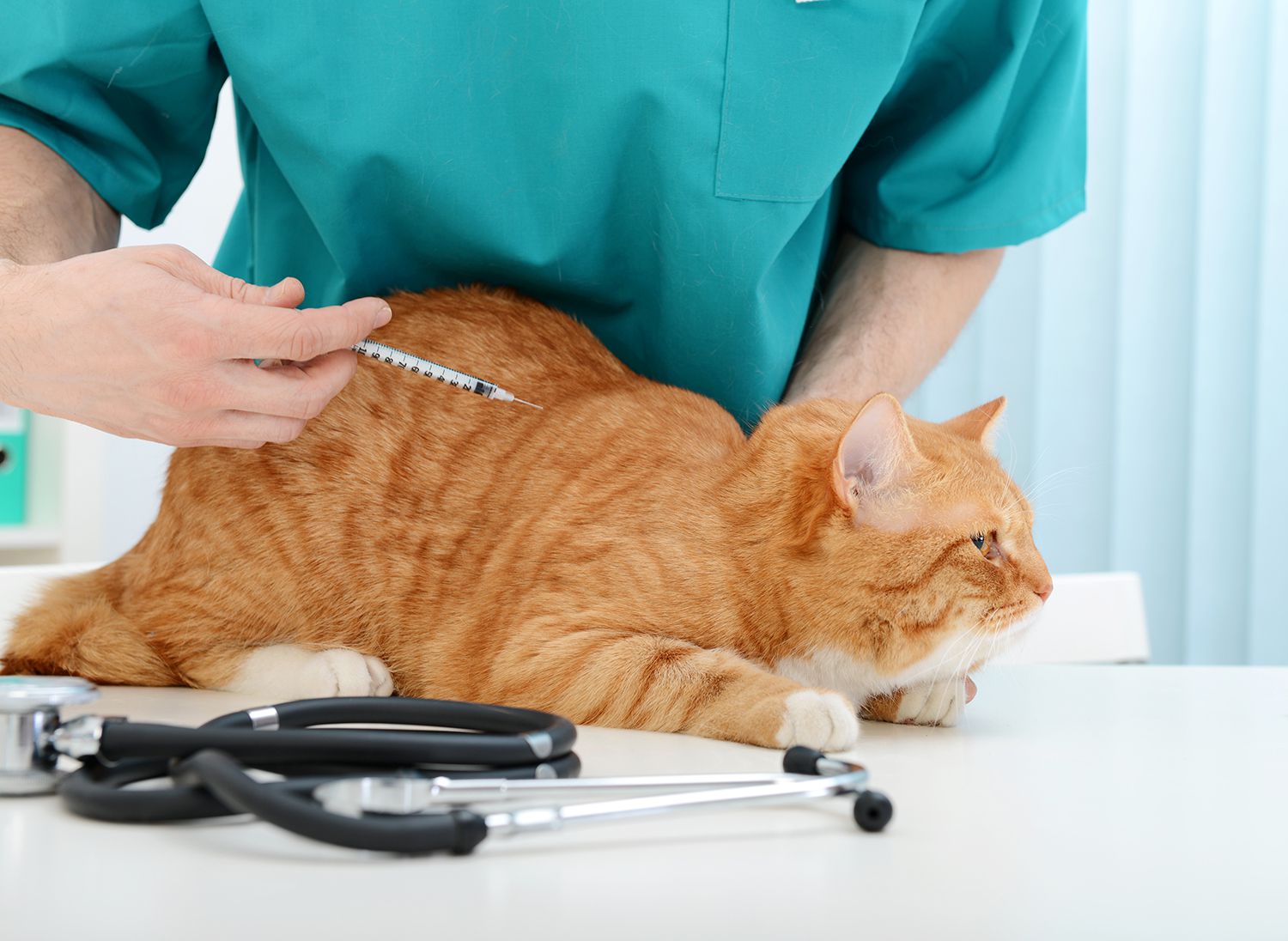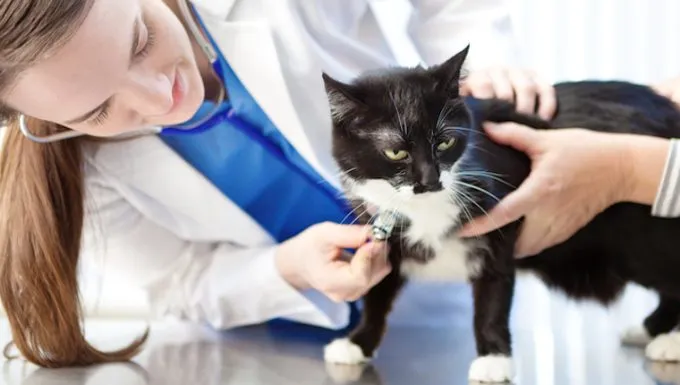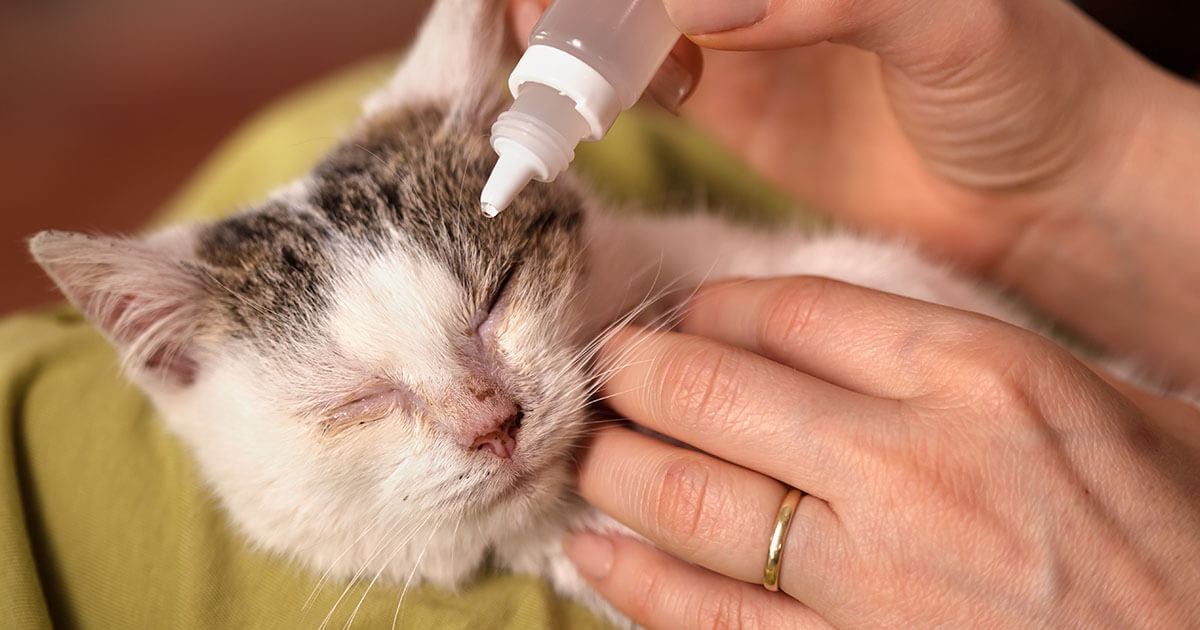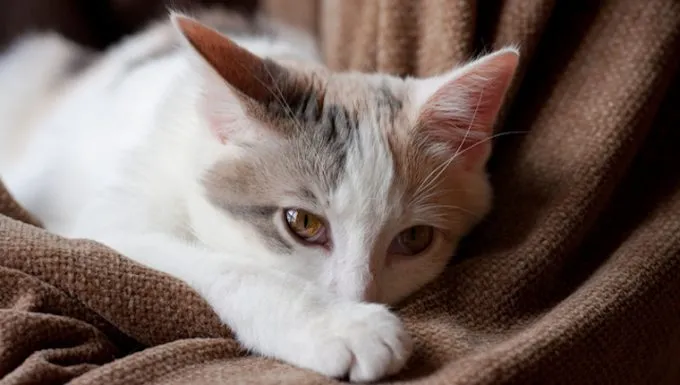Causes & Risk Factors of Liver Disease in Cats
Feline Leptospirosis: A Leading Cause of Liver Damage

Cats can suffer from various liver diseases, which are often caused by a combination of genetic, environmental, and lifestyle factors. The liver plays a crucial role in removing toxins from the blood, producing essential nutrients, and regulating hormone levels. When it becomes damaged, the cat’s overall health is compromised.
The causes and risk factors of liver disease in cats can be divided into three main categories: primary, secondary, and congenital. Primary causes are those that directly affect the liver, such as inflammation, scarring, or cancerous growths. Secondary causes, on the other hand, involve conditions that indirectly damage the liver, like infections, nutritional deficiencies, or toxins.
Congenital factors refer to birth defects that can lead to liver disease in cats. For example, a condition known as hepatic shunt can cause blood to bypass the liver, leading to a buildup of toxins and potentially causing liver damage.
Feline Leptospirosis is a leading cause of liver damage in cats. This bacterial infection, caused by Leptospira bacteria, can be transmitted through contaminated water, soil, or contact with infected animals. Once infected, the bacteria can cause severe liver damage, as well as other systemic issues such as kidney disease and respiratory problems.
Cats that are more prone to developing feline Leptospirosis include those that live in areas with high levels of contamination, have access to contaminated water sources, or come into contact with infected animals. Factors such as age, sex, and health status can also play a role in the development of liver disease.
Other risk factors for liver disease in cats include exposure to toxins, nutritional deficiencies, genetic predispositions, and underlying medical conditions. Common toxins that can harm the cat’s liver include pesticides, heavy metals, and certain medications.
Cats with obesity or those on a high-fat diet are also at increased risk of developing fatty liver disease, which is a condition characterized by an accumulation of fat in the liver cells. In some cases, this condition can progress to liver fibrosis and cirrhosis, leading to severe health complications.
Feline leptospirosis is a bacterial infection that can cause liver failure in cats
The liver plays a crucial role in maintaining overall health in cats, and its dysfunction can lead to various diseases. Understanding the causes and risk factors of liver disease in cats can help with early detection and treatment.
Liver disease in cats can be categorized into two main types: cholestasis and hepatitis. Cholestasis occurs when bile flow is interrupted, leading to a buildup of bile acids in the liver and bloodstream. Hepatitis, on the other hand, involves inflammation of the liver tissue.
The causes and risk factors for liver disease in cats can be divided into two main categories: genetic and environmental.
Genetic Causes
A fluke (Fasciola hepatica) infection, which is more common in sheep but also affects cats. The liver fluke can lead to severe damage to the liver, causing cirrhosis and fibrosis.
Certain genetic conditions, such as alpha-1 antitrypsin deficiency or cystic fibrosis, that affect protein production or transport in the liver.
Environmental Causes
Exposure to toxins and substances that can harm the liver. Common culprits include pesticides, heavy metals (such as copper, lead, or zinc), and certain foods like onions, garlic, grapes, or raisins.
Bacterial infections such as feline leptospirosis. This bacterial infection is caused by Leptospira bacteria and can cause liver failure in cats if left untreated.
In addition to genetic and environmental factors, there are several other risk factors for liver disease in cats. These include:
Other Risk Factors
Certain medications that can harm the liver or exacerbate existing liver conditions.
Advanced age, with older cats being more susceptible to liver disease due to declining liver function and potential co-existing health issues.
Pregnancy or lactation in female cats, which can increase the risk of liver disease due to hormonal changes and increased liver demand.
Feline leptospirosis is a bacterial infection that can cause liver failure in cats if left untreated. It’s essential for cat owners to be aware of this risk factor and take preventative measures such as:
Prevention Measures
vaccinating their cats against feline leptospirosis.
keeping their home clean, reducing the risk of exposure to Leptospira bacteria.
In conclusion, understanding the causes and risk factors for liver disease in cats is crucial for early detection and treatment. By being aware of the potential risks and taking preventative measures, cat owners can help keep their feline friends healthy and happy.
According to the American Animal Hospital Association (AAHA), feline leptospirosis is a significant health threat to cats, especially those with chronic kidney disease or other underlying medical conditions
The liver is a vital organ that plays a crucial role in maintaining overall health in cats. However, it can be affected by various diseases, including cirrhosis and fibrosis. Understanding the causes and risk factors of liver disease in cats is essential for early detection and treatment.
Liver disease in cats can be caused by a variety of factors, including:
Genetic predisposition: Some breeds, such as Siamese and Maine Coon cats, are more prone to liver disease due to their genetic makeup.
Aging: As cats age, the risk of developing liver disease increases.
Toxins and infections: Exposure to toxins, such as pesticides and heavy metals, can cause liver damage. Bacterial and viral infections, including feline leukemia virus (FeLV) and feline immunodeficiency virus (FIV), can also affect the liver.
Malnutrition and obesity: A diet that is lacking in essential nutrients or high in fat can contribute to liver disease.
Feline leptospirosis, a bacterial infection caused by Leptospira bacteria, is a significant health threat to cats, especially those with chronic kidney disease or other underlying medical conditions. According to the American Animal Hospital Association (AAHA), this bacterial infection can cause liver damage and increase the risk of developing cirrhosis.
Fibrosis and cirrhosis are two types of liver diseases that affect cats. Fibrosis is a condition where excess fibrous tissue builds up in the liver, leading to scarring and impaired liver function. Cirrhosis is a more advanced stage of liver disease where extensive scarring has led to permanent damage to the liver.
Causes of cirrhosis and fibrosis in cats can include:
Chronic infections, such as hepatitis and leptospirosis, which can lead to inflammation and scarring in the liver.
Trauma or injury to the liver, including blood clotting disorders that can cause liver damage.
Toxins and chemicals that damage liver cells and contribute to fibrosis.
Identifying the causes of liver disease in cats is crucial for effective treatment. If you suspect your cat has a liver problem, consult with your veterinarian for proper diagnosis and care. With early detection and treatment, many cases of liver disease can be managed successfully.
Symptoms of Liver Disease in Cats
Weight Loss, Lethargy & Poor Coat Condition
Cats with liver disease can exhibit a range of symptoms that may vary depending on the severity and progression of the condition.
Symptoms of Liver Disease in Cats
The most common symptoms of liver disease in cats include:
Weight loss, particularly if the cat is eating normally
Lethargy and a general feeling of being unwell
Poor coat condition, including dullness, dryness, and thinning of the coat
Increased vomiting or regurgitation, which can lead to weight loss and dehydration
A build-up of fluid in the abdomen (ascites)
Jaundice, or a yellow discoloration of the skin and eyes
Pale gums due to a decrease in red blood cells
Increased thirst and urination
A loss of appetite, particularly if the cat has chronic liver disease
Nausea and vomiting, especially after eating or drinking
In some cases, cats with liver disease may exhibit other symptoms such as:
Increased sensitivity to medication, particularly anesthetics
A change in the color of the stool (diarrhea or dark-colored stools)
Fever and increased body temperature
Changes in breathing pattern, such as rapid breathing or labored breathing
Poor circulation, leading to a lack of oxygen to vital organs
Cats with liver disease may also develop complications such as:
Portal hypertension, which can lead to blood clots and increased pressure in the liver
Hepatorenal syndrome, a condition where the kidneys become damaged due to poor circulation and reduced oxygen delivery
Hypersplenism, where the spleen becomes enlarged and removes healthy red blood cells from the bloodstream
Early detection and treatment of liver disease can greatly improve the quality of life for cats and may even lead to a cure.
As the liver becomes more damaged, cats may experience weight loss and a general decline in overall health

The symptoms of liver disease in cats can be subtle at first but will gradually worsen as the condition advances.
One of the earliest signs of feline liver disease is weight loss or failure to gain weight in kittens.
Cats with cirrhosis and fibrosis may exhibit a lack of appetite, leading to decreased food intake and subsequent weight loss.
An increase in vomiting frequency and intensity can also be an early sign of liver disease in cats.
Yellowing of the skin and whites of the eyes (jaundice) is another symptom that may appear as the condition progresses.
It is essential for cat owners to closely monitor their pet’s behavior and health status, reporting any changes or concerns to a veterinarian promptly.
The University of California, Davis reports that cats with liver disease often exhibit symptoms such as lethargy, poor coat condition, and pale gums
Cats with liver disease can exhibit a range of symptoms, and it’s essential to recognize these signs early on to seek veterinary care as soon as possible. The University of California, Davis reports that cats often display lethargy or loss of energy, which is a common sign of liver disease in cats.
Lethargy can manifest as a lack of interest in playtime, hiding more often than usual, or simply being less active overall. As the disease progresses, cats may become increasingly sluggish and difficult to rouse from sleep.
Poor coat condition is another common symptom of liver disease in cats. A healthy cat’s coat should be shiny, smooth, and well-maintained. However, as liver disease takes hold, a cat’s coat may begin to deteriorate, becoming dull, matted, or brittle.
Pale gums are also indicative of liver disease in cats. Healthy cats have bright pink or red gums, while those with liver disease often exhibit pale or white gums due to poor blood circulation and oxygenation of the tissues.
It’s crucial to note that some cats may not display any noticeable symptoms until the disease has progressed significantly. If you suspect your cat is experiencing liver disease, it’s essential to consult with a veterinarian as soon as possible for an accurate diagnosis and effective treatment plan.
Treatment Options for Liver Disease in Cats
Supportive Care & Medications to Manage Symptoms
Cats suffering from cirrhosis or fibrosis of the liver require comprehensive treatment to manage their symptoms and slow disease progression.
Supportive Care
The primary goal of supportive care is to alleviate the cat’s discomfort, maintain their quality of life, and prevent further complications.
Fluid therapy: Administering intravenous fluids helps replace lost electrolytes and maintains adequate hydration.
Pain management: Using analgesics to alleviate pain associated with liver disease, ascites, or secondary conditions such as arthritis.
Nutritional support: Providing a balanced diet that meets the cat’s nutritional requirements, either through oral feeding or tube feeding if necessary.
Monitoring: Regularly monitoring the cat’s condition, including liver function tests and imaging studies to assess disease progression.
Medications to Manage Symptoms
The choice of medication depends on the underlying cause and severity of the symptoms. The following medications may be used:
Diuretics (e.g., furosemide): To manage ascites by reducing fluid accumulation in the abdomen.
Antioxidants (e.g., silymarin): To reduce oxidative stress and protect liver cells from damage.
Moderate dosages of vitamin E: As an antioxidant to support liver health
Ursodeoxycholic acid (UDCA): To improve liver function by promoting the excretion of bile acids
It is essential to work closely with your veterinarian to determine the best treatment plan for your cat, as individual circumstances may vary. With proper management and care, some cats can live comfortably with liver disease for several years.
A note about herbal supplements: While some herbal supplements (e.g., milk thistle) claim to support liver health, their efficacy in treating feline cirrhosis or fibrosis is not well-established, and use of these products should be discussed with your veterinarian before adding them to your cat’s treatment plan.
Treatment options may include medications to manage symptoms such as ascites or encephalopathy

The treatment options for liver disease in cats are aimed at managing symptoms, slowing down disease progression, and improving quality of life.
Medications play a crucial role in managing symptoms such as ascites (fluid accumulation in the abdomen) and encephalopathy (brain dysfunction) associated with liver cirrhosis or fibrosis.
Corticosteroids, such as prednisone, may be used to reduce inflammation and swelling in the abdominal cavity, thereby alleviating discomfort and respiratory distress caused by ascites.
Diuretics, including furosemide, are often prescribed to help reduce fluid accumulation in the abdomen and improve breathing.
Corticosteroids can also be used in conjunction with diuretics to manage encephalopathy symptoms such as lethargy, confusion, and loss of coordination.
Antibiotics may be administered if secondary infections are present or suspected, particularly if the cat has a compromised immune system due to liver disease.
Supportive care is also essential in managing liver disease in cats. This includes providing a nutritious diet that meets their nutritional needs, and ensuring adequate hydration through subcutaneous fluid administration or intravenous fluids when necessary.
Adequate pain management is crucial, especially for cats with cirrhosis or fibrosis who may experience discomfort due to ascites or other complications.
Surgical options are typically reserved for advanced cases where there are signs of portal hypertension or liver failure. These procedures include shunting (creating a pathway around the diseased portion of the liver) and transjugular intrahepatic portosystemic shunt (TIPS).
The University of Guelph reports that supportive care, including fluid therapy and nutritional support, is essential for cats with liver disease.
The treatment options for liver disease in cats are multifaceted and depend on the severity and type of condition.
Supportive Care: The University of Guelph reports that supportive care, including fluid therapy and nutritional support, is essential for cats with liver disease.
Fluid Therapy: Administering intravenous fluids to replace lost fluids and maintain blood pressure. This may be necessary if the cat is dehydrated or experiencing kidney failure.
Nutritional Support: Ensuring adequate nutrition through a well-balanced diet that meets the cat’s nutritional needs, including protein, fat, vitamins, and minerals.
Dietary Management: Cats with liver disease may require specialized diets to help manage their condition. Some common dietary recommendations include:
Low-Sodium Diet: Reducing sodium intake can help alleviate ascites and edema.
Protein-Restricted Diet: Limiting protein intake can help reduce the liver’s workload and prevent further damage.
Specialized Diets: Feeding a diet formulated specifically for cats with liver disease, which may contain added antioxidants and other nutrients that support liver health.
Pharmacological Management: Medications can be used to manage symptoms and slow the progression of liver disease. Some common medications include:
Moderate to High-Dose Ursodiol (ursodeoxycholic acid): This medication has been shown to improve liver function in cats with liver disease.
Corticosteroids: These may be used to reduce inflammation and swelling associated with liver disease.
It’s essential for cat owners to work closely with their veterinarian to determine the best treatment plan for their cat, as liver disease requires ongoing management and monitoring. Regular check-ups and adjustments to the treatment plan may be necessary to ensure the cat receives the best possible care.
- Best Hunter.io Alternatives for 2025 - April 19, 2025
- Best Lead411 Alternatives for 2025 - April 19, 2025
- Best Leadzai Alternatives for 2025 - April 18, 2025



